Table of Contents
Sustainability efforts continue to rise for all industries across the market. Businesses worldwide endeavor to make a concerted effort to meet sustainable consumer demands while maintaining high-quality product packaging.
The restaurant industry, in particular, has seen an enormous influx of sustainable packaging options. From biodegradable to recyclable packaging, the restaurant industry is taking significant steps toward eco-friendly solutions.
In this article, we’ll dive deeper into the most popular biodegradable packaging option, cornstarch packaging. If you haven’t already made the switch, we’ll lay out everything you need to know to take the leap toward more sustainable efforts in your packaging!
What is Cornstarch Packaging?
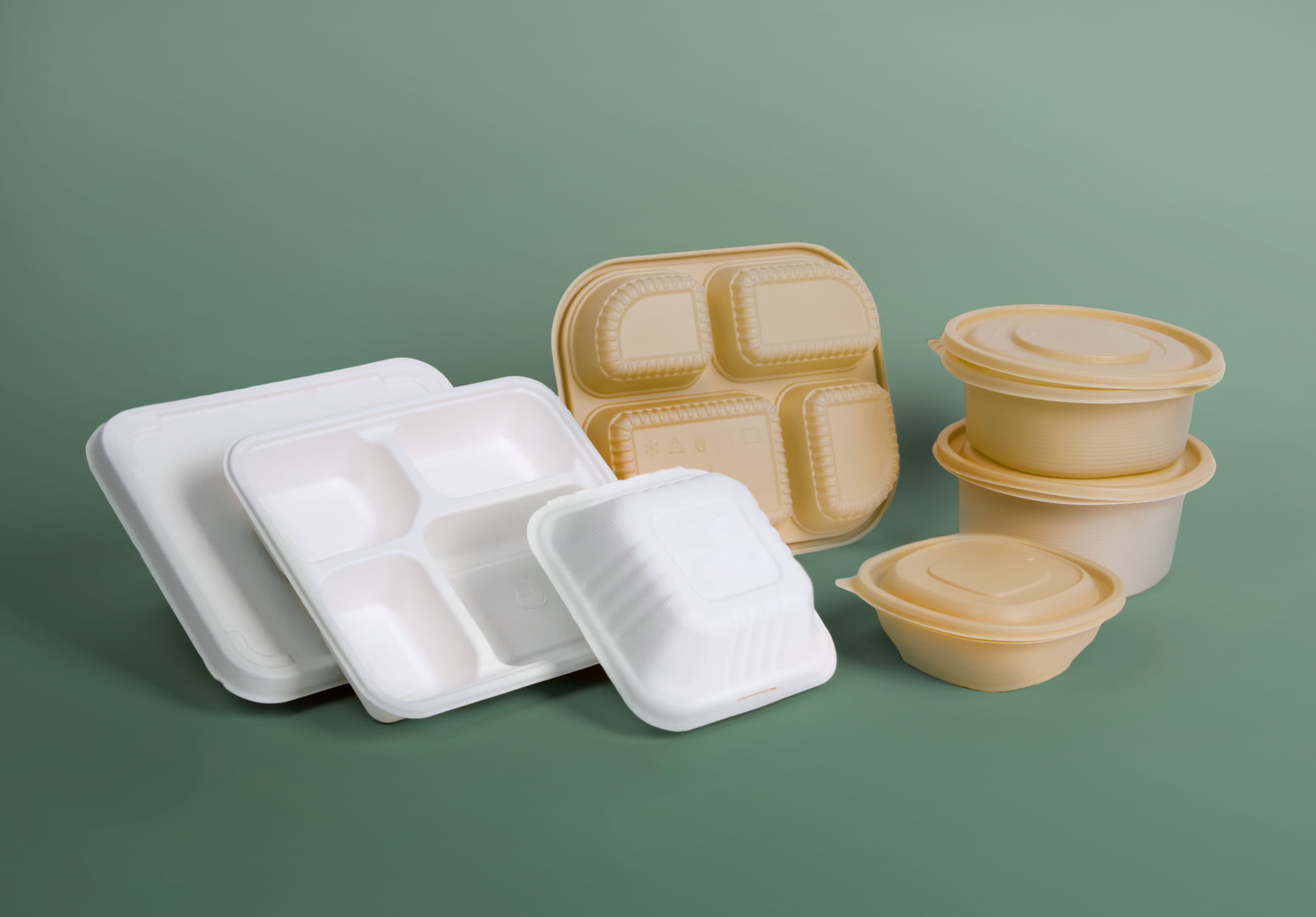
Source: PakFactory
Cornstarch is a biodegradable packaging material that can replace polystyrene (Styrofoam) and plastic. Available in transparent and opaque materials, cornstarch can be used in various ways, but the most popular way to utilize cornstarch packaging is for takeaway food.
This includes packaging options such as;
- Trays
- Lids
- Bags
- Plates
- Bowls
- Containers
Unlike petroleum-based plastic, cornstarch containers are biodegradable and renewable, making them an excellent choice for eco-friendly packaging material and plastic alternatives.
How is Cornstarch Packaging Made?
Cornstarch is part of a more significant movement of emerging bioplastics derived from agricultural waste or byproducts. More companies are starting to create their own environmentally safe alternatives to plastics using various renewable resources like vegetables, oil, fats, recycled food wastes, and, you guessed it, cornstarch.
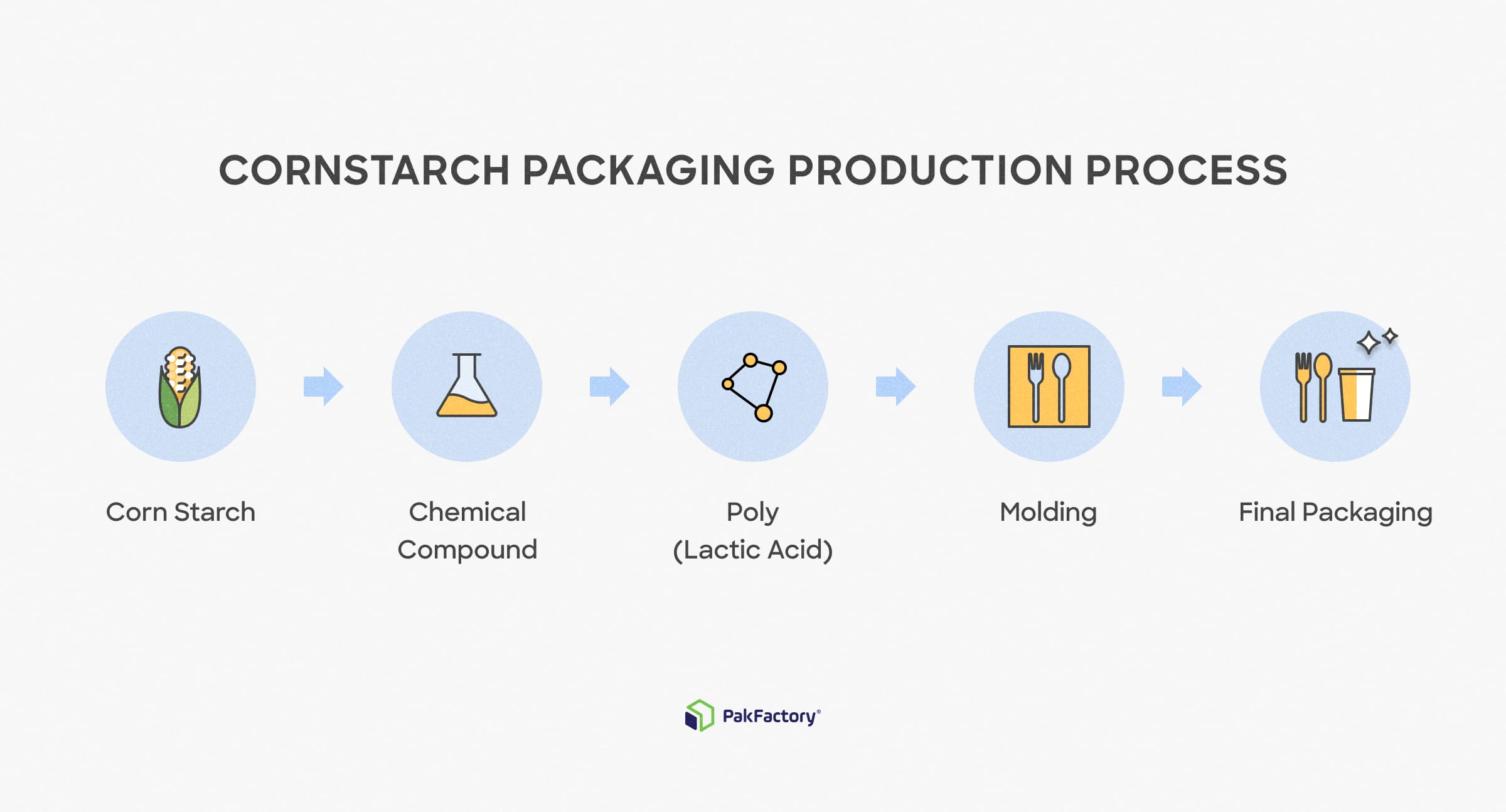
Cornstarch containers use polylactic acid (PLA) plastic made by fermenting the plant sugar and starch. Compared to traditional plastics, PLA plastic is much more environmentally friendly and sustainable as it releases fewer greenhouse gases during production and does not include toxic materials.
Not only is PLA plastic better in production and the exclusion of toxic materials, but when disposed of correctly, it can serve as fertilizer and only takes several months to break down instead of the hundreds of years traditional plastics take.
There are even an array of PLA plastic types or grades to choose from, including;
- 2002D – used for thermoforming
- 3051D – great for injection molding
- 4032D – ideal for producing films
- 6201D – used to produce staple fibre
- 7000D – ideal for making bottles
On top of being more environmentally friendly, cornstarch packaging is very cost competitive to traditional plastics, using the cheapest commercially available sugars, so there is no need to worry about exorbitantly higher costs, overuse and limited supplies. Moreover, the FDA has also approved PLA for use as a polymer, and it is regarded as 100% food safe.
The Lifecycle of a Cornstarch Container
We briefly touched upon the lifecycle of cornstarch packaging in our previous section, but it is worth going into more detail about why this material is so much better than traditional plastics.
For starters, at the beginning of this package’s lifecycle, it is derived from renewable resources, unlike petroleum-based plastic. And in the processing and manufacturing phase of its lifecycle, cornstarch plastic emits fewer greenhouse gasses than traditional plastic.
Once this eco-packaging reaches the consumer, it is used like any other product before moving into the end phase of its lifecycle, disposal.
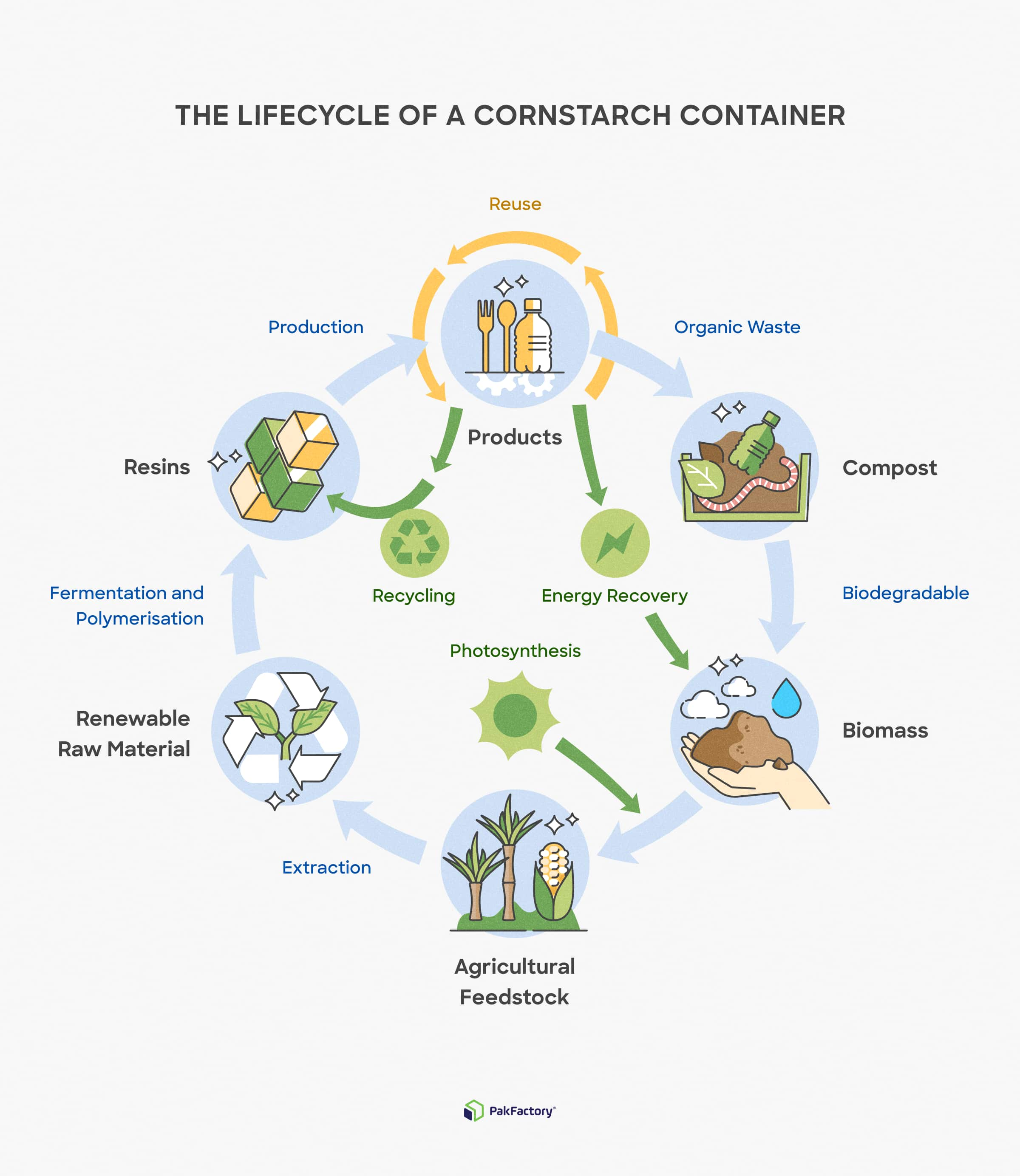
The main characteristic of biodegradable cornstarch packaging is that it naturally degrades or can serve as fertilizer, leaving behind no negative environmental concerns or hazardous gases. Within months, cornstarch plastic can break down into just carbon dioxide and water, further helping to reduce the carbon footprint of both consumers and businesses.
But is it worth investing in? The short answer is yes.
The Cornstarch Packaging Market
Because of the exponential growth in the environmentally friendly movement, starch packaging materials and other bioplastics are quickly gaining market share. According to Globe News Wire, the biodegradable cornstarch packaging market will reach USD 126.85 billion by 2026.
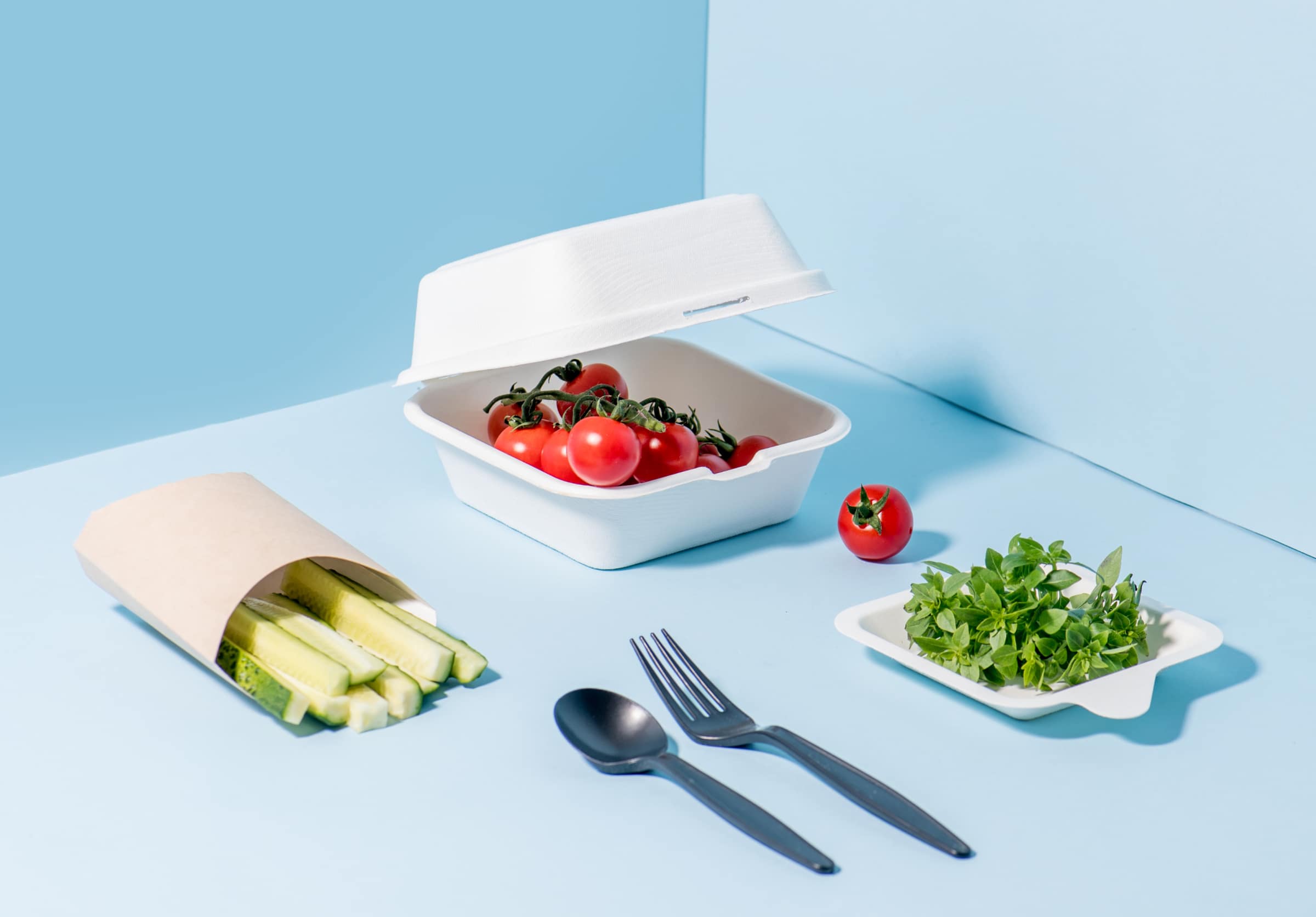
Bio-based materials have many environmental benefits over time, and being renewable can make them an even better alternative to less eco-friendly options. As more companies pledge to change for a healthier planet, identifying and scaling sustainable packaging options is crucial to product and business success.
But what exactly are the benefits of cornstarch packaging for your business?
The Pros & Cons of Cornstarch Packaging
Using biodegradable packaging material offers companies many benefits, especially as a replacement for conventional plastics. Looking back at the lifecycle of cornstarch containers, we can already see the benefits to businesses and the environment.
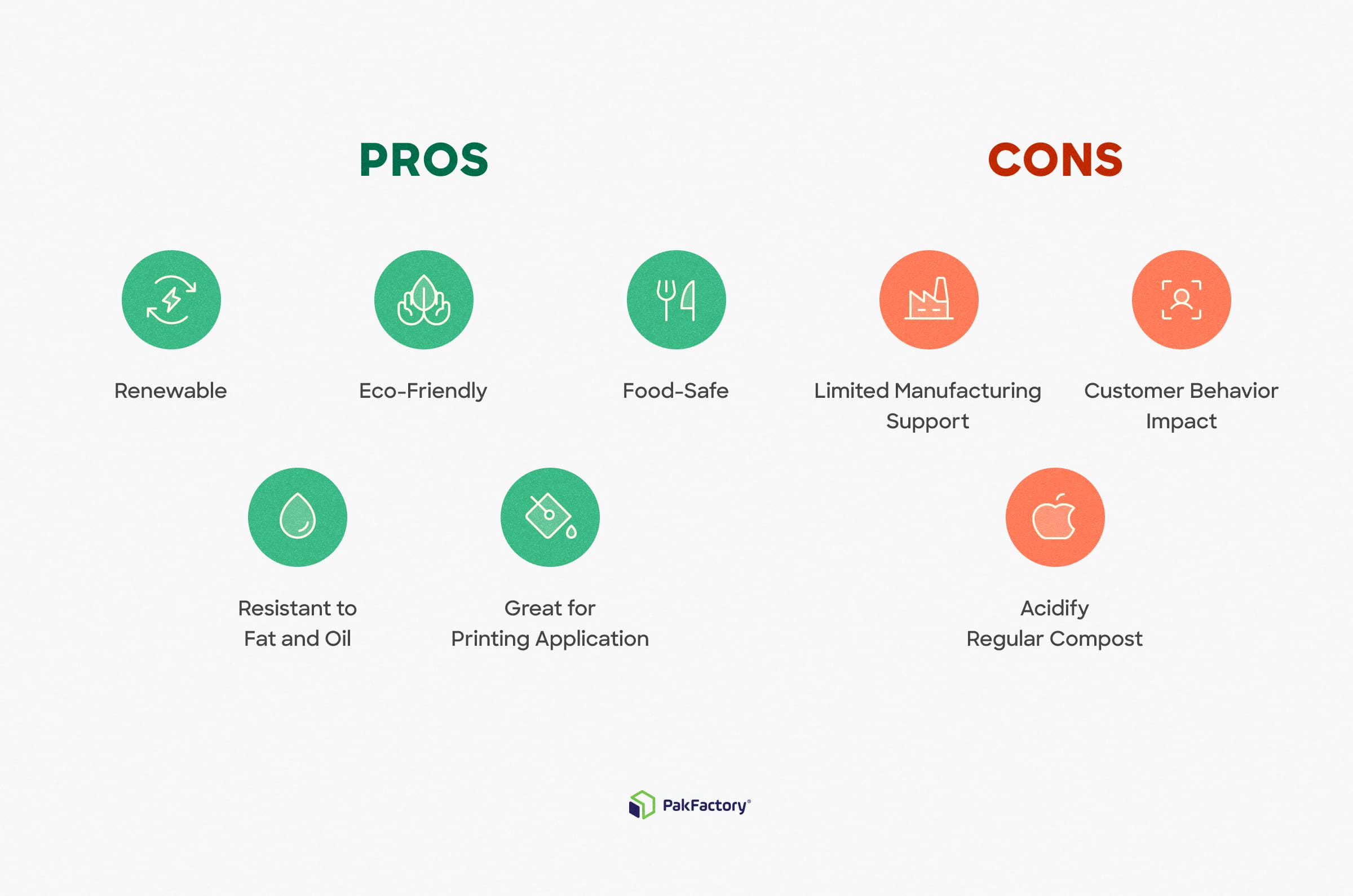
The main advantage of using cornstarch packaging is that it is renewable since corn is affordable and readily available. Unlike petroleum-based plastic, there is no scarcity of resources, making it easier to utilize this kind of packaging material effectively and for the long term.
Starch packaging materials are also 100% biodegradable, recyclable and compostable, making them great for an eco-friendly initiative.
On top of this, no harmful toxins are present in the material, making it much safer to produce and use for consumers. Cornstarch is effective as food packaging since it is 100% food-safe, has a high aroma barrier, and is resistant to food fat and oils without additional coatings or chemicals.
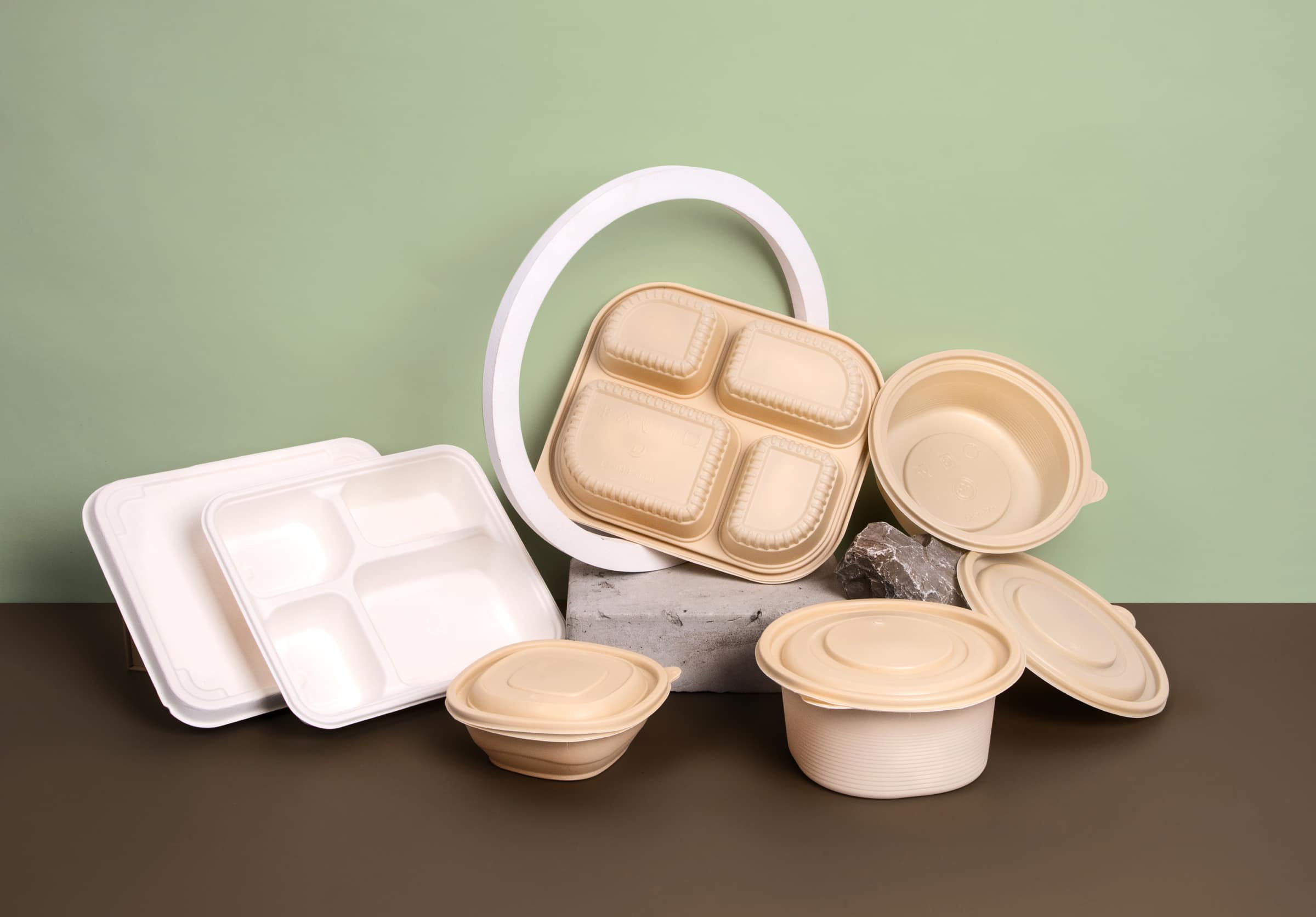
Source: PakFactory
Furthermore, cornstarch packaging has low flammability and works well for printing applications, allowing businesses to brand their packaging without causing harm to the environment and offer a high-quality customer experience.
But while these cornstarch benefits seem significant enough to make the change, it’s still essential to cover both sides of the coin. Let’s examine the drawbacks to ensure you are well informed about your decision.
Firstly, because cornstarch is so new as a packaging material, infrastructure is not in place yet to fully support it. While this will improve over time, using cornstarch as a packaging material currently poses some challenges. Though the polymers in cornstarch packaging are indeed eco-friendly and compostable, only a few facilities can now accommodate them.
This type of packaging also relies on customer behaviors. Because most customers will not compost the material properly, most cornstarch packaging will likely end up in landfills due to improper disposal. In addition, composting PLA plastic in large quantities could cause other issues, as doing so may make regular compost more acidic, posing a threat to the environmental impact.
The only way to combat these issues is by raising awareness about this packaging material and the proper disposal process to prevent more packaging from ending up in landfills.
Why You Should Switch to Cornstarch Packaging
Despite its drawbacks, cornstarch containers are still much more eco-friendly than plastic. So now that you’ve seen all the benefits and disadvantages of this eco-friendly alternative, you might still wonder, is it worth switching to this biodegradable packaging?
Yes! Cornstarch packaging material can significantly benefit your business and the environment, making this packaging solution worthwhile. It can help your business become more socially responsible and attract eco-conscious shoppers focused on supporting eco-friendly businesses.
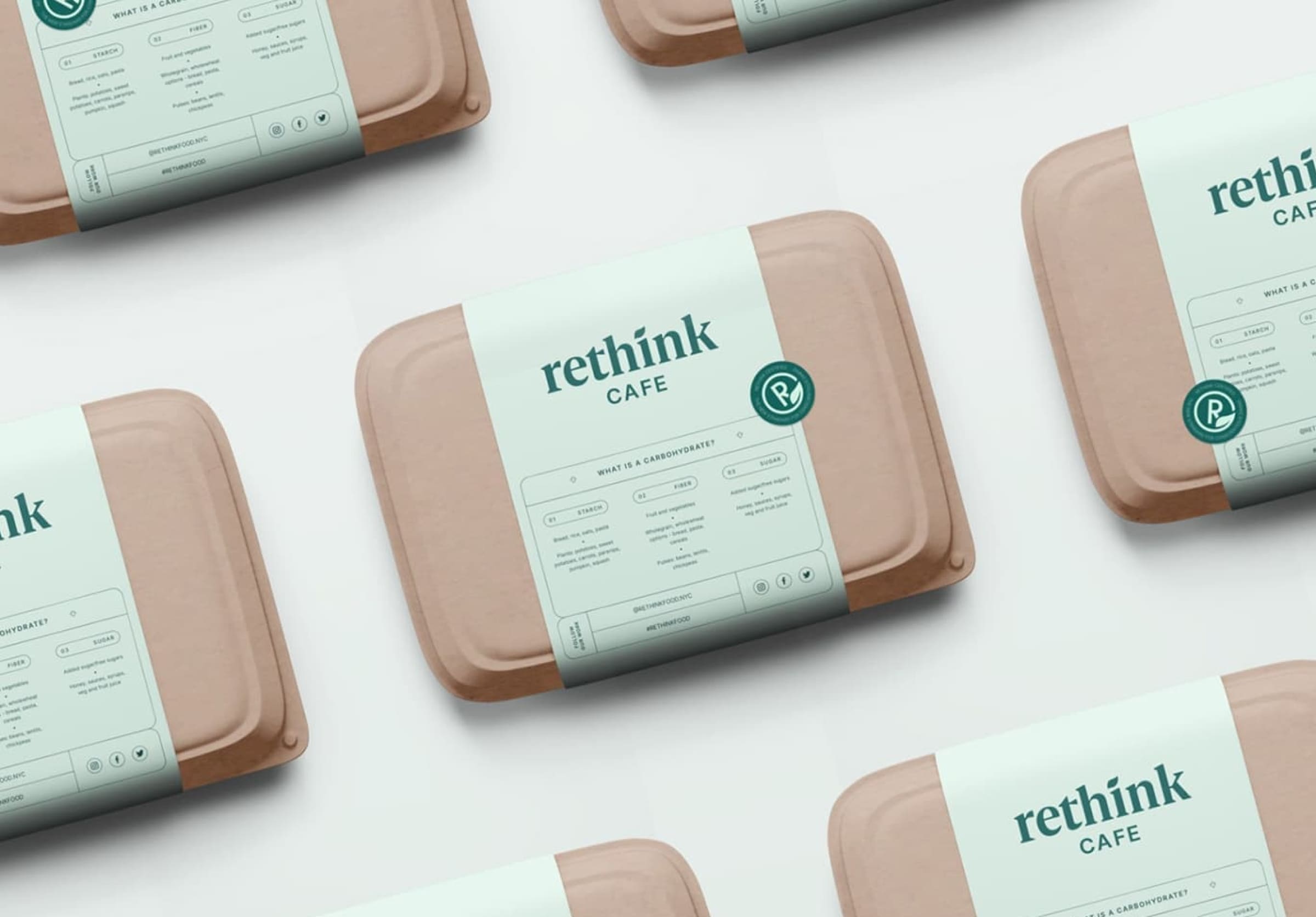
Source: Chris Martinie
Consumers have become much more conscious of greenwashed packaging and are much more knowledgeable about materials in the industry. Using cornstarch is an excellent start to help market your brand effectively and establish a more authentic connection with customers.
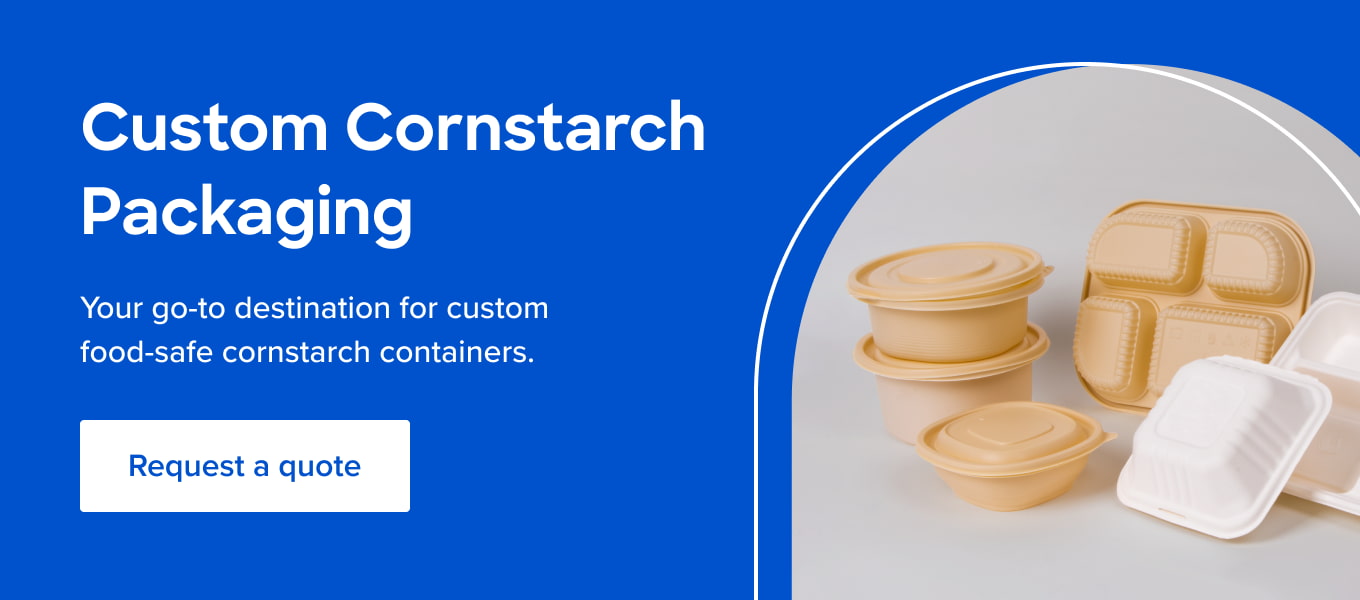
Make the Jump to Sustainability
With impending bans on single-use plastics looming, switching to more sustainable options is fast becoming a necessity rather than a choice.
Even so, using more environmentally friendly and innovative options such as cornstarch packaging materials or other biodegradable options helps you stand out and highlights your commitment to an increasing push for sustainability.
As we continue to learn more about the fate of plastics, exploring biodegradable and sustainable packaging materials is vital to stand out as a brand in the long run.
Were you looking to learn more about your sustainable packaging options? Get in contact with our product specialists to discuss your options today!





